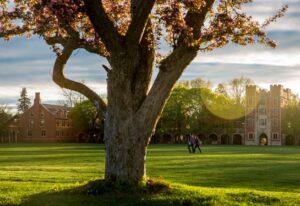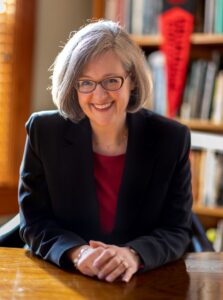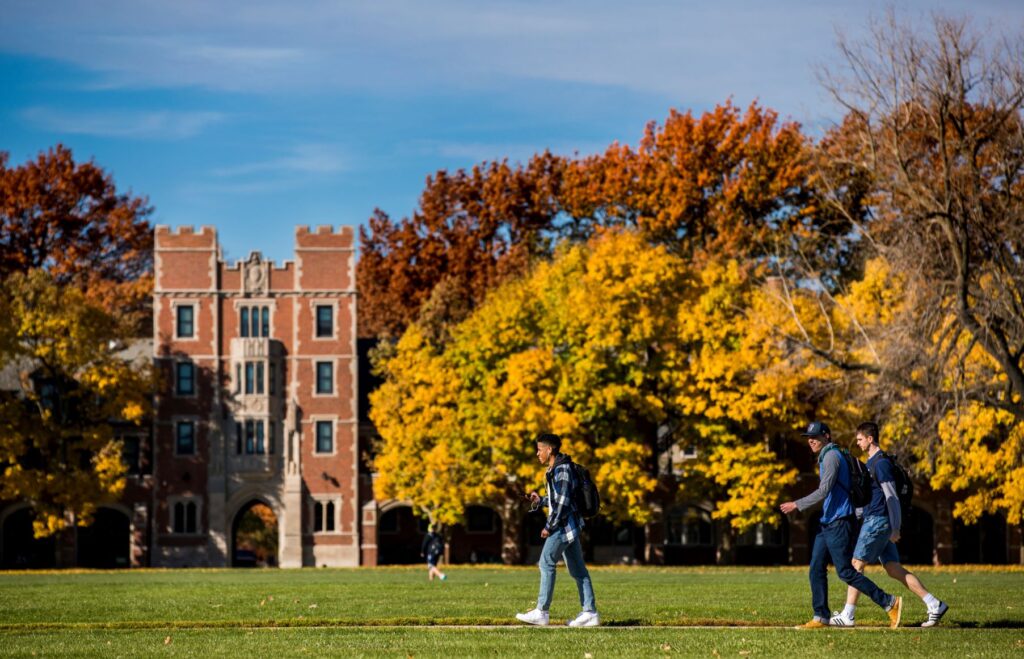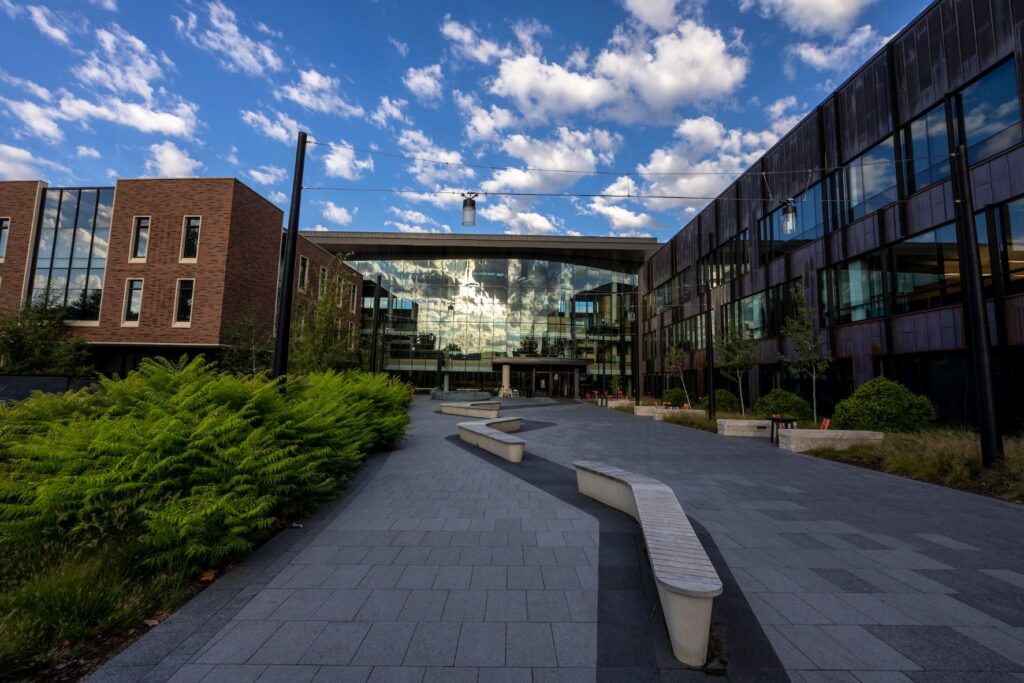 Rising from the prairies in the middle of Iowa lies one of the mightiest small private institutions in the nation, Grinnell College. An education at this thinker’s paradise offers both prestige and promise for 1,700 undergrads each year who embrace the humanities and liberal arts. In many ways, a degree is almost a golden ticket for the future. Imagine for a moment if there was no debt upon completion.
Rising from the prairies in the middle of Iowa lies one of the mightiest small private institutions in the nation, Grinnell College. An education at this thinker’s paradise offers both prestige and promise for 1,700 undergrads each year who embrace the humanities and liberal arts. In many ways, a degree is almost a golden ticket for the future. Imagine for a moment if there was no debt upon completion.
For those who might fall short of meeting financial thresholds, the college has both a $3 billion endowment and leaders who are not afraid to use it. When the pandemic struck in 2020, Grinnell did what any sensible institution with that kind of deep foundation would do in a crisis: it eliminated all loans and opted to cover the difference in financial aid with scholarships.
Yes, Grinnell has the resources. But as its sincere president Anne Harris gracefully points out, there aren’t many willing to do what Grinnell is doing.
“The combination of being need-blind for domestic students and test-optional in admissions and no loan for all students—there are fewer than 10 institutions in the United States,” Harris says. “And it’s us and the University of Chicago in the Midwest. That made me sit up and take notice of what we’re doing out here in the prairie, which is using the resources and that endowment. I think the pandemic made us all think about students being able to graduate from Grinnell College debt-free. That’s something that can have a generational impact. I am humbled to be in the company of these other institutions that are able to do this.”
Grinnell is spending $5 million per year over the next decade to help its students, including 60% of whom receive some form of financial aid. It is the rarest of the rare moves, but Grinnellians would say that over the past 176 years they’ve dared to be different.
Beyond the no-loan initiative, it is hard not to notice the innovation happening here, led by its spectacular Humanities Center and the cross-discipline workings of its campus. To learn more about how Grinnell is serving students in the 21st century, University Business sat down with Harris, who took over as president in 2020 after a short administrative stint here and a long career as a professor and vice president for academic affairs at DePauw University.
You officially became president just a few months into the pandemic. What were your thoughts as you navigated through that?

I was focused on two prolonged realizations: place and partnership. The pandemic made us acutely aware of place, because when we moved online we were moving our entire academic enterprise so that it could work in Brooklyn, Iowa, and Brooklyn, NY. And I was very happy to find a Brooklyn in New Zealand. We had to find ways that we could do it in all the Brooklyns, which meant time zones and a new awareness of the inequitable learning environments that students were living in. We became much more intentional about placemaking. Only 8% of our students are from Iowa. We became more aware of social health in place.
The second word I would prize is partnerships. We had to be in partnership in ways that we had not before, especially with small liberal arts colleges in rural areas. We tried to be all things, and we could not be during the pandemic. We ended up partnering with a group of epidemiologists and physicians at the University of Iowa and they provided us with counsel and research. We ended up partnering with merchants in town because the financial hit of being virtual was really intense. We thought about ways that we could sustain the economic vitality of the town throughout the pandemic. And we had to work with state officials, as well.
What about the students? What has Grinnell done to help them during the past three years and how are they feeling overall?
Things are certainly better than they were in 2020. We became much more aware of learning environments and how disparate and different they could be. We became much more invested because of the pandemic. Every student that needed a computer got to take one with them off campus. We provided food and utilities, and subsidies for students who were on financial aid. We tried to keep communication going. One of my favorite anecdotes is watching them create communities in virtual spaces. Some students created an entire Minecraft campus.
Since coming back, they really have wanted to be in a community, but the biggest erosion I have seen is an erosion in trust. Trust that this won’t happen again. Trust that the college won’t need to close down. The ability to trust in a way that academe seeks to be that predictable future: there is a fall and there are midterms, and there are exams. The predictability was all gone. They don’t rely on that trust. It’s not necessarily that they are distrustful. But trusting that all will be well is just not an option that I see them engaging in. Rather, they’re constructing their own backup plans. They’re constructing their own social spaces.

And so, one of the big moves you made was going to the no-loan initiative. Talk about the impetus for making that bold move.
We had a retreat with trustees dedicated to intergenerational equity. Student debt emerged as the big differentiator of the post-college experience. We were looking at some comfortable projected surpluses in our budget. We knew we could ride out the volatilities. So we made the investment, $5 million a year, that’s been added to the operating budget, in order to supply no-loan. And I love the idea of endowing no loan. This is really the alumni community supporting our students, which they do so well. I’m very grateful to President Biden for doing away with the student debt, but how long can that program continue? So really looking at doing this long-term at Grinnell.
The President has talked up student loan forgiveness quite a bit. What are your thoughts on the proposals?
I will register genuine surprise at the cost (projected minimum of $400 billion). That gives me pause. Grinnell College spends $64 million in financial aid every year. That’s an enormous amount. Within student debt, there are so many different kinds of stories. The key is, student debt with a degree is a very different story than student debt without a degree. It was an interesting first move versus free community college. I understand why, because that has the most immediate generational impact.
What kinds of reactions have you gotten to the no-loan initiative?
It’s a small liberal arts college, so people reach out to each other. Parents have said this makes a huge difference for us. We’re also hearing from students who are applying to us knowing that they can graduate debt-free. We have seen a decrease in the number of students who hold campus jobs. We’re seeing students take a little more time for themselves because of no loan.
Aside from no-loan, you have another spectacular initiative happening there. Can you share a little bit about the new Humanities Center?

This is 10 years and 16,000 emails in the making, basically taking these little faculty offices and classrooms that had been in converted residence halls from the 19th century, spread out all over campus. So, there are a series of neighborhoods. You have political science next to the economics department, and there’s that marvelous ability to just bump into each other. Students, faculty, staff were involved in the design [from architectural firm EYP in Boston.]
What they’ve done is set up two different dynamics, old and new. So there’s a 19th-century park called the Alumni Recitation Hall. It’s bricks, with neo-Gothic elements, but it’s now enveloped in this glass envelope that has diagonal bridges. The joy of this building is how the students use it. They are everywhere, studying. There’s a global café. There’s a digital learning lab. There’s a wonderful fluidity where not every space is scripted. There’s this sense of possibility. One of my favorite things about it is the big names of the humanities from the 19th century—Isaiah, Aristotle, Caesar. Inside there’s a whole new bunch of names that students decide—Toni Morrison, Rachel Carson, Octavia Butler, James Baldwin.
Grinnell is thriving, but how can the rest of higher ed and liberal arts institutions thrive in the future?
We need to affirm the kind of educational model that we are, which is a residential educational model. In doing so, continue to be very intentional about the communities we create. For the first time in their history, small liberal arts colleges need to stay focused on diversity and access in the residential experience. At Grinnell now, 50.8% of our student population is multicultural. We really are in this community that seeks to look like the United States and the United States in its global environment. A third of our students are international students. So creating that community where a student from Washington State meets a student from Kenya meets a student from Bolivia. In order for small liberal arts colleges to survive, the kind of community you create is absolutely top priority because that’s the mission. That’s the piece that gets us up every morning.
The second thing is partnerships. Our model of residential, small liberal arts college, most of which are rural, were set up to be far from Sin City. We have to come out of that. We have to partner with other colleges or cities nearby. Our students are much more connected to different environments; it’s not about a retreat at all. Through their digital world, there’s a permeability. A place like Grinnell needs to be connected to Chicago and nearby major urban centers but also think in partnership. Affirm the kind of community that you are. Get your identity and your mission at the forefront. And always tend to that business model, because that is the precarity of small liberal arts colleges—either you’re tuition-dependent, gift dependent, or, more rarely, like Grinnell, you’re endowment dependent.
More from UB: The President Series
- Dominican: Providing support for first-gen students
- Florida Gulf Coast: From Dunk City to world impact, the rise of FGCU
- Holy Cross: Tradition reigns, but change has been positive
- Midland: Small university continues to be ‘relentlessly relevant
- Minerva: A look at the world’s most innovative university
- Muhlenberg: Leading the way as pioneers for women
- Purdue: Growth tied to keeping students at center of bulls-eye
- Quinnipiac: Creating partnerships and lifelong learning
- Rockland CC: Is this a time of opportunity for community colleges?
- Stetson: Why kindness has been one of the keys to Stetson’s success
- St. Francis College (NY): Building for the future in the heart of Brooklyn
- Touro University: A worldly university finds ‘serendipity’ in the city
- University of Kentucky: Caring for students remains No. 1 priority
- University of Montana: How higher ed can work for veterans
- University of Oklahoma: A flagship university that is changing lives on campus
- Waubonsee CC: Remaining relevant requires deep focus on students, employees
- Western New England: What is a new traditional university and why is the vision so vital?







